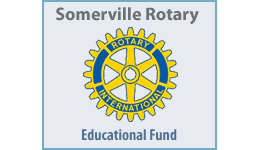
By Ian Halim
When Dr. Audrey Evans was 80 years old, she got married for the first time, tying the knot with a physician-colleague she’d worked with for some 40 years, Giulio “Dan” D’Angio. One morning in 2005, Evans and D’Angio got married, went to a cafe for juice and croissant, and made it to work by 8:30am. She was a woman so devoted to her work, apparently, that she couldn’t take a day off for her own wedding!
The two were not just physicians, but also researchers. Decades earlier they had collaborated on an influential staging system for a form of cancer called neuroblastoma. That system helped stratify patients based on the severity of disease and the risk of death. By many reports, Dr. Evans also cut the rate of death for neuroblastoma at Children’s Hospital of Philadelphia by as much as 50%. This was a whopping achievement, large even in relation to the improvements taking place in the mortality of many cancers at that time – between roughly 1950 and 1980, when anti-cancer chemotherapy agents first saw widespread use (more on this in a moment). Evans even became known as the mother of neuroblastoma, though avenging queen might have been more apt, since she fought rather than birthed the disease.
Neuroblastoma arises from the irregular replication of immature nerve cells. And since it arises from immature cells, it’s most common in children. Often, it occurs in small glands above the kidneys known as the adrenals, but it can strike nerve cells elsewhere, such as in the brain or spinal cord. In this essay, Dr. Evans serves as a kind of gateway to some key ideas about how cancers and chemotherapies work. In general, cancer develops when a cell of a specific type – an immature nerve cell in neuroblastoma, for instance – experiences a genetic mutation and then replicates out of control. The cluster of uncontrollably-replicating cells can collect into a tumor or mass, sometimes compressing and damaging other tissues, or sloughing off rogue cells to far-flung parts of the body via the blood or a lesser-known fluid known as lymph. When cancer cells migrate in this frightening way, it’s known as metastasis.
Many factors contribute to the risk of developing cancer: inherited genetic mutations, non-inherited mutations that accumulate during the lifespan, toxic exposures, and infection with certain viruses or other cancer-causing pathogens. Although neuroblastoma is most common in children, most cancers become more common with age, so that age itself forms an important risk factor for cancer. As more time passes in a human life, cells also have time to accumulate the mutations that make them cancer-prone.
Unlike cancer cells, healthy cells have a safety mechanism that triggers the cell to self-destruct after detecting certain kinds of damage. In the process of a cell’s transition to becoming cancerous, its genes mutate and switch off this safety mechanism. When a cancer cell grows and divides into new cells, the resulting “daughter” cells carry the cancer cell’s mutated genes. But without the safety checks of healthy cells, cancer cells divide and divide – like a car without brakes.
But in the 1940s, physicians and scientists began to understand for the first time how to artificially force the brakes on to slow that uncontrolled cell division. It was the first chemotherapies that provided the “brakes” on cancer cells’ uncontrollable replication. This brings us back to Evans, who was born in York, England and completed medical school in Scotland, but then came to the United States in 1953, to learn from one of these pioneers of this newfound method of chemotherapy – Sidney Farber.
By the time Evans began her Fullbright with Farber, he was in the midst of his groundbreaking exploration of the first chemotherapy agents that could slow cancer cells’ growth and replication. But his first pivotal observation was actually the opposite: that if a person with cancer took vitamin B9, also known as folate, that person’s cancer would start growing faster.
When any cell grows and divides – regardless of whether it’s a healthy cell or a cancerous one – that replicating cell must make an extra copy of its DNA, so that it has enough genetic material for both daughter cells. And the chemical system for copying DNA requires folate. So, a cell cannot divide or replicate without folate.
Feeding cancer cells folate, then, allows those cells to copy DNA faster and thereby divide and replicate faster. This is why Farber observed that taking extra folate speeds up the replication of cancer. But when folate is scarce, it creates a kind of bottleneck, slowing DNA synthesis and cell division. (This is why women who are pregnant are advised to supplement with folate. When a pregnant woman is folate deficient, this can cause problems with the fetus’s development; the fetus must make new cells rapidly as it grows and develops, and doing so requires folate.)
Farber had learned that giving someone with cancer folate was like throwing fuel into the fire, making the cancer grow faster. And if Farber had stopped there, he might never have established The Children’s Cancer Research Foundation, which later became the famed Dana Farber Cancer Institute (named in his honor, and in honor of the philanthropist Charles Dana). But after making this observation, Farber had the insight to keep going. He realized that if folate sped up the growth of cancer, then blocking cells’ ability to use folate should slow them down. In fact, blocking the body’s use of folate should starve cancer cells of their ability to replicate and grow.
Farber tested the proposition and found that the drug aminopterin, an anti-folate, did exactly what he had predicted, inducing temporary remission of leukemia in children – the first or one of the first times this had ever been achieved. If folate supplementation was like pouring gasoline into the fuel tank of cancer, antifolates were the brakes. An antifolate agent like aminopterin doesn’t destroy folate, but rather interferes with cells’ ability to use it, gumming up the works of DNA synthesis and thereby blocking cell replication and division – including for cancer cells. Instead of running full-speed, cancer must wade through mud.
To this day, the antifolates form a crucial class of chemotherapy agents. Different chemotherapy agents block cell division in somewhat different ways, but they all achieve the same basic thing: they block cell replication. And chemotherapies also typically block cell replication in a largely non-selective way, exerting their effects not just on cancer cells, but also on healthy human cells.
Although chemotherapy agents can be life-saving, this largely non-selective cell-replication-blocking action is also the cause of many of their side effects. For instance, chemotherapies can block the replication of human hair cells and cause the hair to fall out (though cold caps worn on the head during chemo reduce blood flow, cutting down on chemo’s penetration of hair follicles, and reducing hair loss). Chemotherapies can also partly suppress the body’s immune defense against infection, by blocking the replication of the immune cells responsible for that defense. (Antifolates’ effect upon the immune system is so potent, in fact, that sometimes clinicians use antifolates not as chemotherapy agents, but specifically for this immune-suppressing effect in the treatment of autoimmune disease.)
Yet whatever their drawbacks, chemotherapies can be life-saving, and now form a central part of the armamentarium that clinicians use to treat cancers – together with surgical removal of a tumor, radiation therapy, hormone therapies, immune modulating therapies, and other targeted therapies that pick out a specific vulnerability of a specific cancer type.
But, of course, children with cancer are much more than bodies with cells replicating out of control – they are little human beings with their own human worlds. And here, too, Evans innovated. She once said: “…you must think about everybody – the siblings, the mother, the father, maybe grandmother. You must remember that they’re part of a group.”
In the early 1970s, Jim Murray, the later-general-manager of the Philadelphia professional football team, the Eagles, called Evans to ask her where funds might be directed to help kids with cancer. She didn’t even know who the Eagles were, but she came up with an idea. In 1969, the same year that Evans arrived at the Children’s Hospital of Philadelphia, the daughter of Philadelphia Eagles football player Fred Hill was diagnosed with the white blood cell cancer leukemia. This was what got Murray started raising funds for children with cancer.
Evans realized that when kids were sick, their families often had to travel from out of town while they received their treatments, and that finding a place to stay was a common hardship. So Evans and Murray conceived of an entirely new enterprise: a kind of free hotel for the families of sick children. McDonald’s franchises contributed, on the condition that the houses be named for the fast food behemoth. Originally, the McDonald’s stores drew on profits from Saint Paddy’s Day Shamrock Shakes. The houses that Evans envisioned became a reality and are now known as Ronald McDonald Houses (though McDonald’s has been criticized by some for contributing only a small part of the houses’ budget). In addition to a place to stay, the houses also offer meals and hire social workers to support families of sick kids. As of 2022, there were 380 such facilities in the United States and throughout the world.
Sometime each March or April, brilliant yellow daffodils bloom upon the green hills of York, England – where Audrey Evans was born. Medieval walls and turrets of rusty-hued limestone rise above the flowers. During a video produced for the Modern Heroes series, Dr. Evans remarks, “I was given a mission, and I was given the ability to serve it.” She has asked only to be remembered as, “a woman who cared.”
Physician-scribe and Bagel-Bard-at-large Ian Halim writes about how medicine relates to everything from ethics to botany – aiming to make science accessible to the widest possible audience. Ian earned his PhD in Greek & Latin literature and his MD, both at Columbia University in The City of New York. He now lives in Pittsburgh, where he will begin a sabbatical in July.















Very informative. Thanks, Ian.
Good to learn about the complexities of treatments.